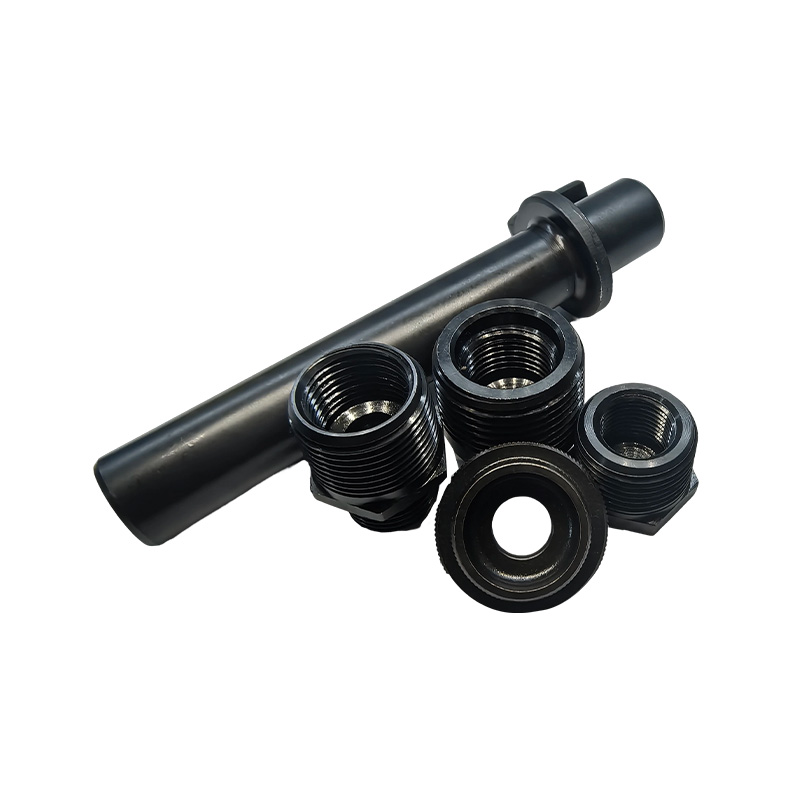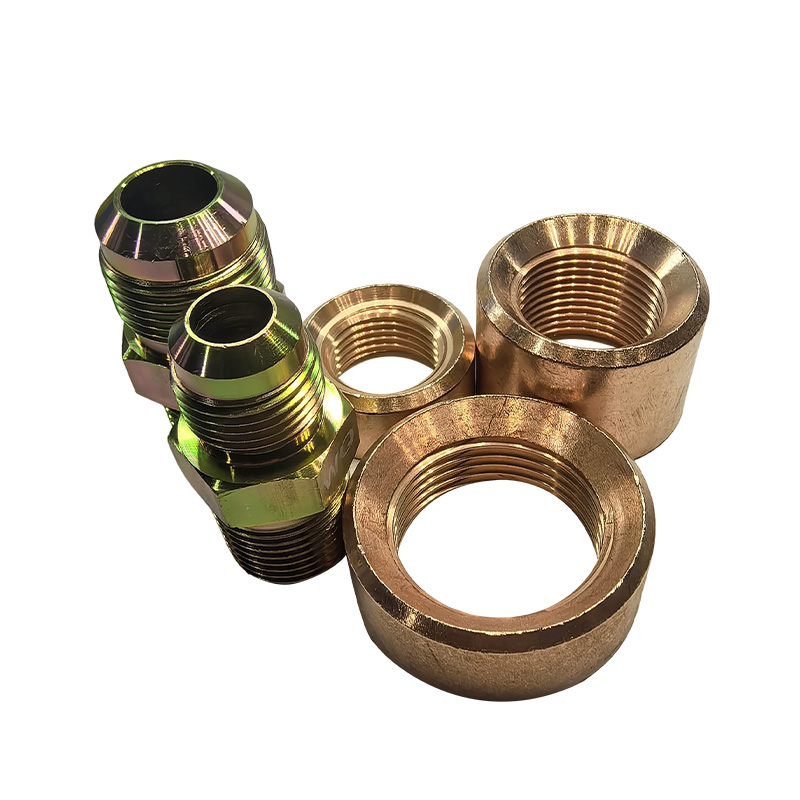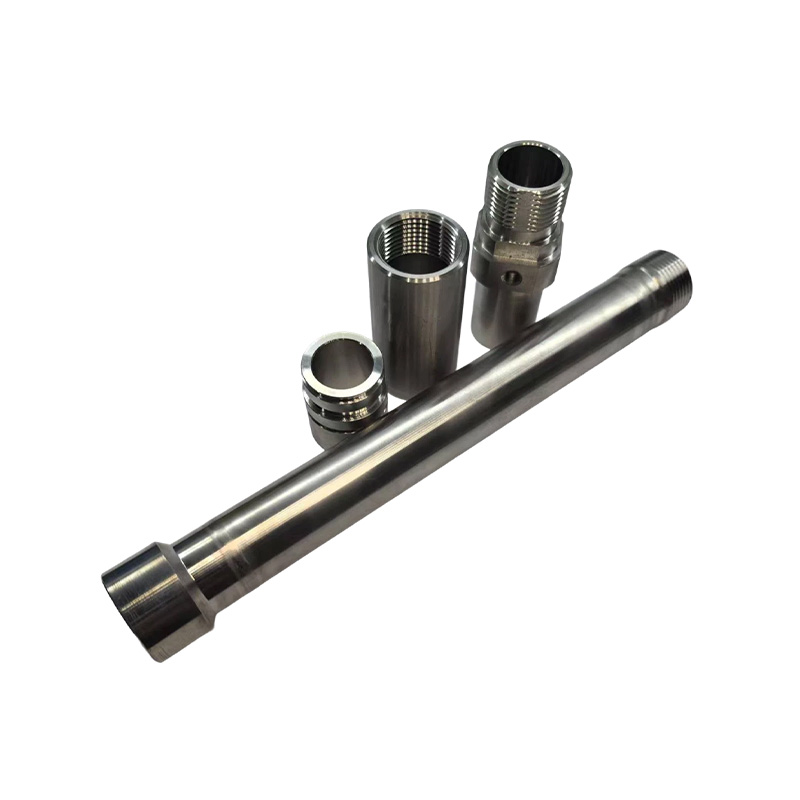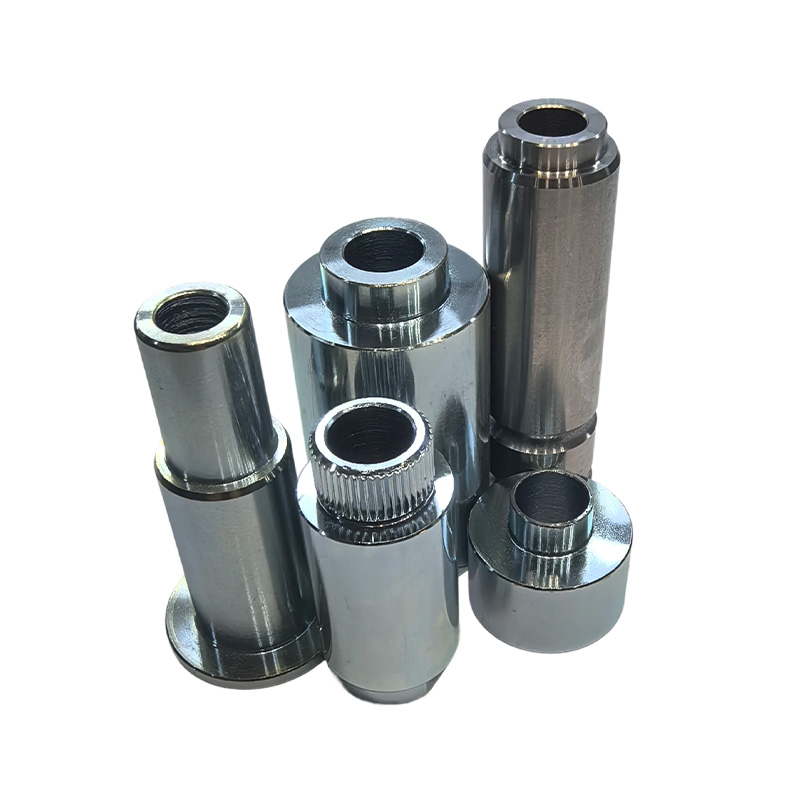How can gas appliance connectors ensure leak-free connections?
Release Time : 2025-07-31
The safety and sealing of gas appliance connectors depend primarily on the material selection. High-quality materials must not only withstand long-term pressure and temperature fluctuations but also effectively resist corrosion. Stainless steel and copper alloys are generally the preferred materials. Stainless steel is known for its excellent corrosion resistance and high strength, maintaining its performance even in harsh environments. Copper alloys are widely used in gas systems due to their excellent thermal conductivity and pressure resistance. These materials not only provide reliable mechanical support but also possess excellent sealing properties, helping to prevent gas leaks.
In addition, some high-end products utilize special surface treatments, such as nickel plating or zinc plating, to further enhance the material's corrosion resistance. This treatment not only extends the service life of the connector but also reduces the risk of leaks caused by material aging. By selecting the right materials and applying appropriate surface treatments, gas appliance connectors can maintain high reliability in a variety of operating environments.
To ensure leak-free connections, modern gas appliance connectors often utilize a multi-layer sealing design. This design typically includes at least two independent sealing rings: a static seal and a dynamic seal. Static seals are typically O-rings made of rubber or polytetrafluoroethylene (PTFE). These materials offer excellent elasticity and chemical resistance, providing reliable sealing even under high pressure. When a joint is subjected to external pressure, the O-ring deforms and conforms tightly to the joint surface, forming an effective sealing barrier.
Dynamic seals are typically located between moving parts within the joint, such as rotating or sliding parts. Common dynamic seals include metal gaskets and elastomeric seals. These seals can maintain a good seal despite slight internal movement or vibration. For example, some high-performance joints utilize spring-loaded seals, which automatically compensate for gaps caused by wear or temperature fluctuations, ensuring long-term sealing.
In addition to materials and seal design, some gas appliance joints are equipped with automatic shut-off valves (also known as emergency shut-off valves). These valves quickly close upon detecting an abnormal condition, preventing further gas flow and thus avoiding potential safety hazards. For example, if system pressure suddenly increases or flow exceeds the normal range, an automatic shut-off valve will immediately respond, shutting off the gas supply and preventing a potential leak or explosion.
Automatic shut-off valves operate based on advanced sensor technology and intelligent control systems. They monitor the system's operating status in real time and respond according to preset safety parameters. This proactive protection mechanism provides users with an additional layer of safety, especially important in domestic gas appliances. Even if other safety measures fail, the automatic shut-off valve serves as a last line of defense, ensuring the safety of personnel and property.
Modern gas appliance connectors commonly utilize quick connect/disconnect designs, which not only greatly enhance installation and maintenance convenience but also ensure an optimal seal every time. Quick-connect connectors utilize spring-lock mechanisms or thread-locking mechanisms to achieve a tight fit, maintaining a stable connection even with frequent use and reducing the possibility of human error.
A significant advantage of quick-connect connectors is that they require no tools to connect or disconnect, significantly simplifying the installation process and reducing costs. More importantly, this design ensures efficient operation while minimizing the risk of leaks. With each connection, the connector automatically adjusts to the optimal position, ensuring even force on the sealing ring for a perfect seal.
To further ensure the safety and reliability of gas appliance connectors, manufacturers typically subject each product to a series of rigorous tests and certifications. These tests include, but are not limited to, pressure testing, leak testing, and durability testing. Through these tests, manufacturers verify the product's physical properties and ensure compliance with international standards and industry regulations.
In summary, through carefully selected materials, multi-layer sealing designs, automatic shut-off valves, quick connect/disconnect mechanisms, and rigorous testing and certification, gas appliance connectors offer superior safety performance in a variety of conditions, effectively preventing leaks. Whether for domestic or industrial use, these advanced technologies and design concepts provide users with reliable safety assurance, ensuring greater peace of mind and confidence when using gas systems.
In addition, some high-end products utilize special surface treatments, such as nickel plating or zinc plating, to further enhance the material's corrosion resistance. This treatment not only extends the service life of the connector but also reduces the risk of leaks caused by material aging. By selecting the right materials and applying appropriate surface treatments, gas appliance connectors can maintain high reliability in a variety of operating environments.
To ensure leak-free connections, modern gas appliance connectors often utilize a multi-layer sealing design. This design typically includes at least two independent sealing rings: a static seal and a dynamic seal. Static seals are typically O-rings made of rubber or polytetrafluoroethylene (PTFE). These materials offer excellent elasticity and chemical resistance, providing reliable sealing even under high pressure. When a joint is subjected to external pressure, the O-ring deforms and conforms tightly to the joint surface, forming an effective sealing barrier.
Dynamic seals are typically located between moving parts within the joint, such as rotating or sliding parts. Common dynamic seals include metal gaskets and elastomeric seals. These seals can maintain a good seal despite slight internal movement or vibration. For example, some high-performance joints utilize spring-loaded seals, which automatically compensate for gaps caused by wear or temperature fluctuations, ensuring long-term sealing.
In addition to materials and seal design, some gas appliance joints are equipped with automatic shut-off valves (also known as emergency shut-off valves). These valves quickly close upon detecting an abnormal condition, preventing further gas flow and thus avoiding potential safety hazards. For example, if system pressure suddenly increases or flow exceeds the normal range, an automatic shut-off valve will immediately respond, shutting off the gas supply and preventing a potential leak or explosion.
Automatic shut-off valves operate based on advanced sensor technology and intelligent control systems. They monitor the system's operating status in real time and respond according to preset safety parameters. This proactive protection mechanism provides users with an additional layer of safety, especially important in domestic gas appliances. Even if other safety measures fail, the automatic shut-off valve serves as a last line of defense, ensuring the safety of personnel and property.
Modern gas appliance connectors commonly utilize quick connect/disconnect designs, which not only greatly enhance installation and maintenance convenience but also ensure an optimal seal every time. Quick-connect connectors utilize spring-lock mechanisms or thread-locking mechanisms to achieve a tight fit, maintaining a stable connection even with frequent use and reducing the possibility of human error.
A significant advantage of quick-connect connectors is that they require no tools to connect or disconnect, significantly simplifying the installation process and reducing costs. More importantly, this design ensures efficient operation while minimizing the risk of leaks. With each connection, the connector automatically adjusts to the optimal position, ensuring even force on the sealing ring for a perfect seal.
To further ensure the safety and reliability of gas appliance connectors, manufacturers typically subject each product to a series of rigorous tests and certifications. These tests include, but are not limited to, pressure testing, leak testing, and durability testing. Through these tests, manufacturers verify the product's physical properties and ensure compliance with international standards and industry regulations.
In summary, through carefully selected materials, multi-layer sealing designs, automatic shut-off valves, quick connect/disconnect mechanisms, and rigorous testing and certification, gas appliance connectors offer superior safety performance in a variety of conditions, effectively preventing leaks. Whether for domestic or industrial use, these advanced technologies and design concepts provide users with reliable safety assurance, ensuring greater peace of mind and confidence when using gas systems.







